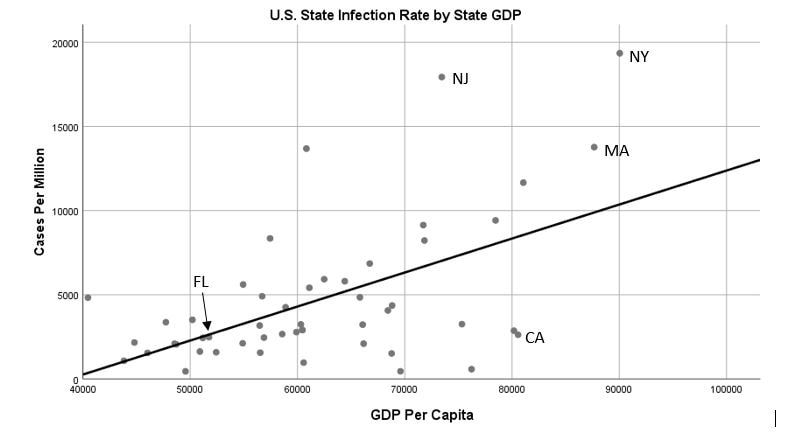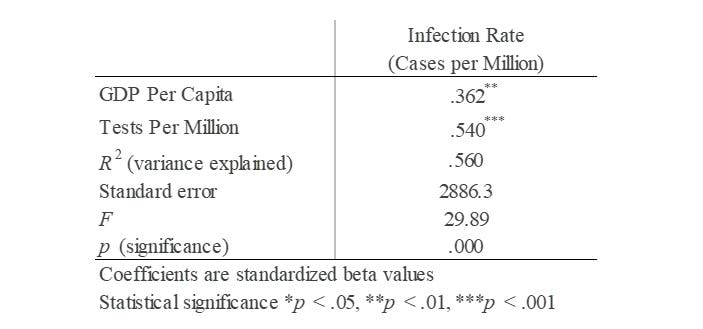|
Due to popular demand, I performed another brief analysis of the COVID-19 infection rate, this time looking at the United States by individual state. The results were similar to the international findings, previously posted. The infection rate (# cases per million population) is strongly correlated with economic strength (GDP per capita) at the state level, just as it was at the country level. This continues to suggest that economic activity promotes greater social contact allowing for the transmission of the virus. The following scatter plot illustrates the relationship (dots represent 50 U.S. states.) Since we also have good data on COVID-19 testing in the United States, I added it to the analysis by regressing the infection rate on both the economic strength and the testing rate of each state. The following table shows that both variables are strongly related to the reported number of cases and together explain 56% of the variance in the state-level data. Comparatively, the amount of testing has a larger effect (.540) than the economy (.362) on the infection rate while both are statistically significant. So what does this tell us? The finding relative to testing should come as no surprise. States and countries that test more will find more positive cases. However, the finding relative to GDP is troublesome. The COVID-19 virus disproportionately affects strong economies, presumably due to the high level of contagion coupled with the high level of social contact involved in economic activity. More sophisticated research with many other factors is warranted. But the analysis highlights the vulnerability of economically developed regions to pandemic, and suggests the need to elevate this issue in our thinking about local preparedness as well as national defense.
Sources: Worldometer for COVID-19 data by state as of May 28, 2020. Retrieved from www.worldometers.info/coronavirus U.S. Bureau of Economic Analysis for GDP data by state for Q4 2019 (seasonally adjusted.) Retrieved from www.bea.gov/data/gdp/gdp-state Comments are closed.
|


